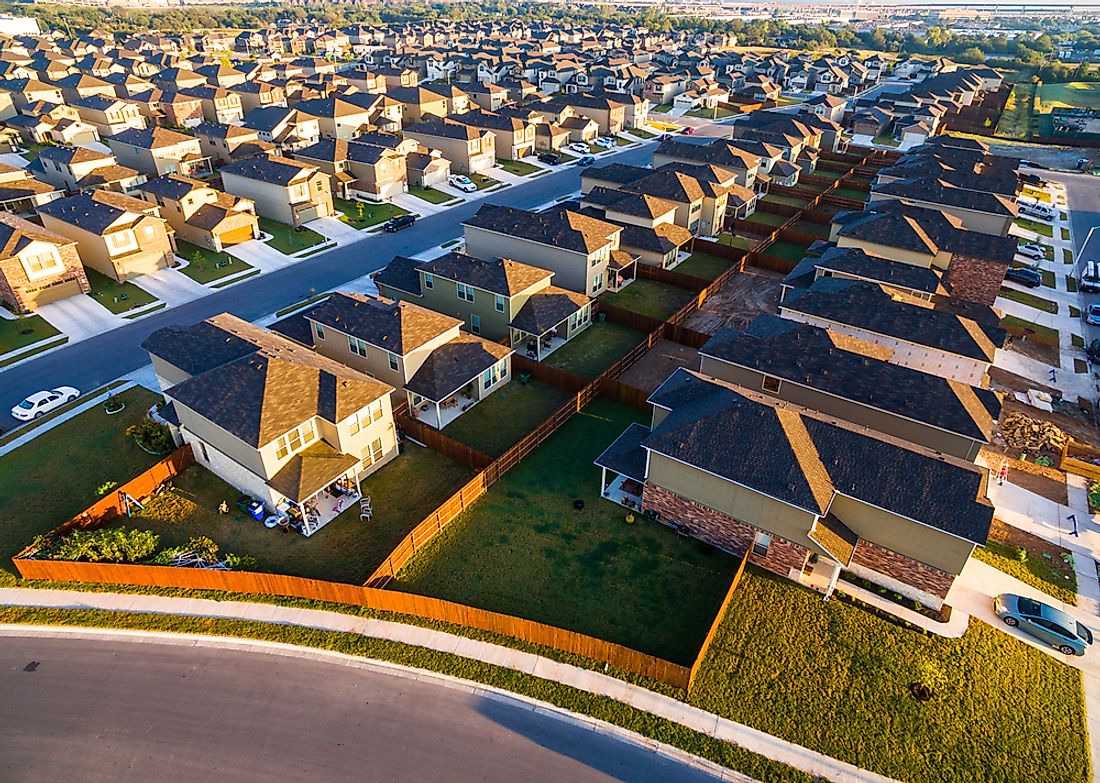What is a Suburb?

A suburb is a residential area in a city or in an urban center characterized by big buildings, shops, and other social amenities. A suburb may cover a large area or just a small area concentrated with all these facilities. It may also be part of the metropolitan area, in the city, or on the outskirts of the city. Suburbs are commonly characterized by detached houses, semi-detached houses, and flats. The houses are mostly built far apart from each other. The majority of them have gardens, parks, and spacious compounds.
Origin and Use
The word 'suburb' was coined from the ancient French word “subburbe” which originates from the Latin word 'surbubium'. ‘Sub’ means under or below whereas ‘urb’ means a city. Suburb can therefore loosely mean under or in the shadows of a city. ‘Suburbani’ is a word that was first used by the Roman Statesman Cicero to refer to the huge villas and Estates built by the rich Roman Patricians in the outskirts of Rome
In most English areas, the word suburb is used to mean an area mostly resided by people, especially in the outskirts of a city. In Australian and South African English, it is used to mean neighborhood. In the United Kingdom, a suburb refers to a residential area out a city regardless of administrative boundaries. For instance, in London, suburbs include the small towns and villages such as Ealing and Bromley that were absorbed during the growth and expansion of the city. In the United States and Canada, a suburb can either be a separate residential area or a recognized municipality.
Early History of the Emergence of Suburbs
Suburbs started growing as a result of the emergence of early urban centers. At around 190 AD with the booming of Luoyang, the emperor and other important administrative officials were allowed to live in the city. Other casual workers and residents lived outside the city in small villages and towns, which translates to the present day suburbs. As the cities grow, suburbs tend to absorb. Suburbs also came up as a result of residents who wanted to escape the harsh industrial conditions of the city. As a result, they established their residence in the outskirts. This situation was first experienced in London after residents escaped the pollution and poor sanitary conditions in the city. More houses were built in the suburbs after the Metropolitan Railway was established to facilitated transport to and from the city center.
The Study of Suburbs
The academic study of suburbs focuses on the study of origins, growth, culture, customs, politics, and a gender and family oriented kind of suburban space. Many of the suburban residents are middle-class people and the business class, most of who want to own a private house or escape the harsh city conditions. The composition of a suburb counters the theory that says the suburban areas are for the wealthy. Mary Corbin Sies argues that it is important to examine how a suburb is defined as well as the difference between cities, urban centers, and suburbs, considering the geographic term and economy of the suburb and the town.







